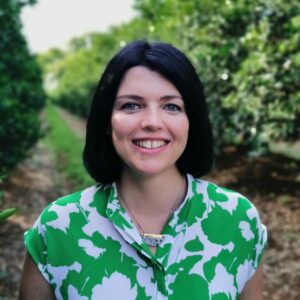SA dairy farm: a perfect balance between input and output
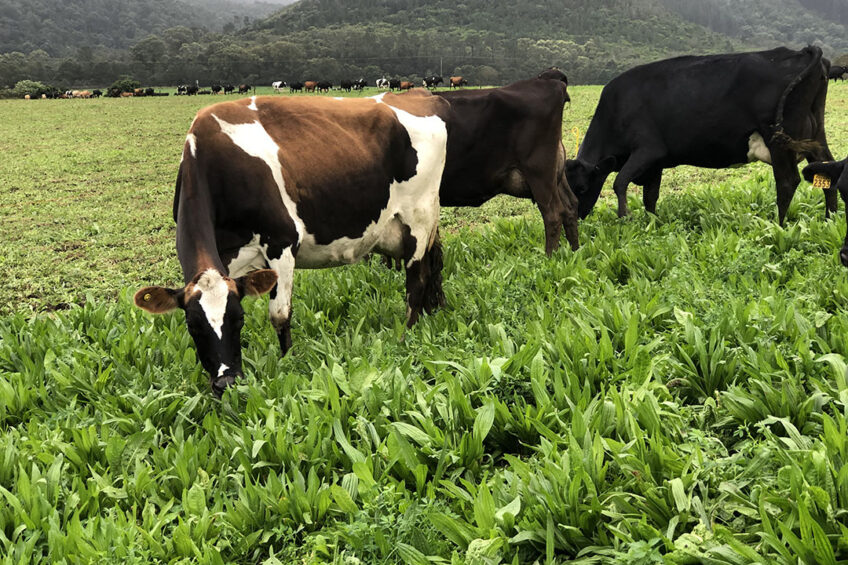
Lauded for their stewardship of the land on which they farm, the Biggs family is setting a precedent for how dairy herds can reach greater sustainability in South Africa.
Obtaining 65% of a dairy herd’s feed from pasture in South Africa is a mean feat, especially if it is entirely rainfed. Dryland dairy farming in South Africa is a rarity, with the arid climate necessitating at least partial irrigation of pastures where cows are not in a TMR system.
Father and son team, Bonnen and Dean Biggs, are part of the 15% of dryland farmers that rely on rain to keep their pastures flourishing. And they are not only improving their environmental footprint, but profit margins too.
Dean was recently named the winner of the 2022 Milk Producers’ Organisation Nedbank Stewardship Award. By continuously improving his soil, reducing nitrogen applications and potassium leaching, the dairy farm is able to meet the sustainability requirements of their milk buyer while ensuring the farm will still be productive for generations to come.
Dean attributes the success of the farm to high grass intake and the quality thereof. The 1,350 cows in milk, of which 10% are Friesland, 20% Jersey and the remaining 70% a cross between the 2 breeds, average 5,900 litres per lactation each. While farmers are paid according to litres delivered and not milk solids, the Biggs don’t push for maximum volumes. Instead, the goal is to keep input costs as low as possible and production as high as possible. This means feeding minimum concentrate and keeping the cows in a good condition to ensure fertility and high milk production.
The herd calves in winter due to drier summers and the majority of the feed being available in winter. There is also a winter premium price advantage with the local dairy, since most dairy farmers in the area produce milk in spring and summer.
Maximum nutrition
To get the maximum value out of the 580-hectare farm, maintaining soil health is vital to keep the pastures flourishing and the cows fed. Over the last decade, the Biggs’ have doubled the amount of carbon in their soil, from 1.5% to 3%. By applying chicken litter and cow manure, lime to optimise pH levels, and planting a multi-species pasture, both soil health and grass quality has improved. The improvement has been so extensive that chemical nitrogen applications have been halved from 220kg per hectare annually to 110kg per hectare, and potassium no longer leaches from the soil. Today, the Biggs get around 12 tonnes per hectare of grazing material, double the 6 tonnes per hectare in 2013.
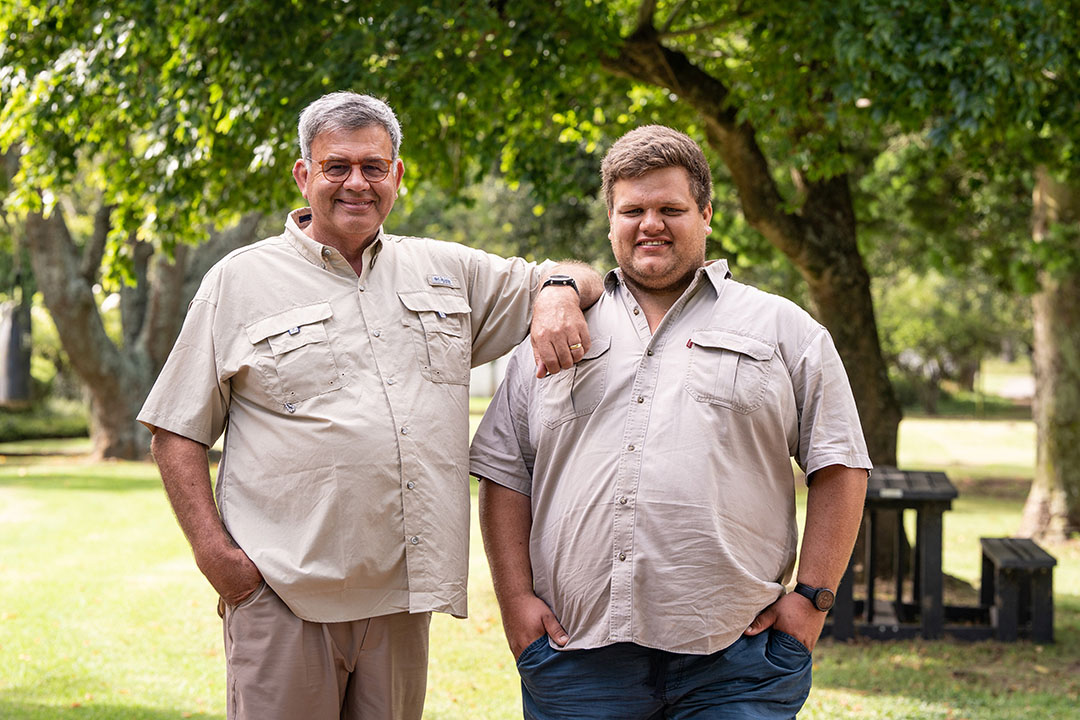
By far the biggest impact on reducing bought-in feed has been the switch from a predominantly kikuyu-based pasture to a multi-species crop consisting of lucerne, chicory, red clover, and ryegrass. “Kikuyu has a low nutrition content, but is also a thirsty crop. The chicory and lucerne, on the other hand, have a deep tap root system and can access moisture far below the surface in the drier summer months, which is when the kikuyu would suffer from the lack of rain.
“With this new diet, even if the cows are only getting 6kg of grass each per day, they still only need 8% protein concentrate, without necessitating the higher concentrate that would’ve been necessary with kikuyu,” says Biggs.
The lucerne fixes its own nitrogen in the soil, which is partly why the chemical nitrogen applications have been reduced. Manure slurry and wastewater collected from the dairy is applied to the pastures throughout the year, with solids spread annually.
The nutritional content of the new pasture mix has maintained milk production while reducing the need for milk concentrates, thereby improving profitability.
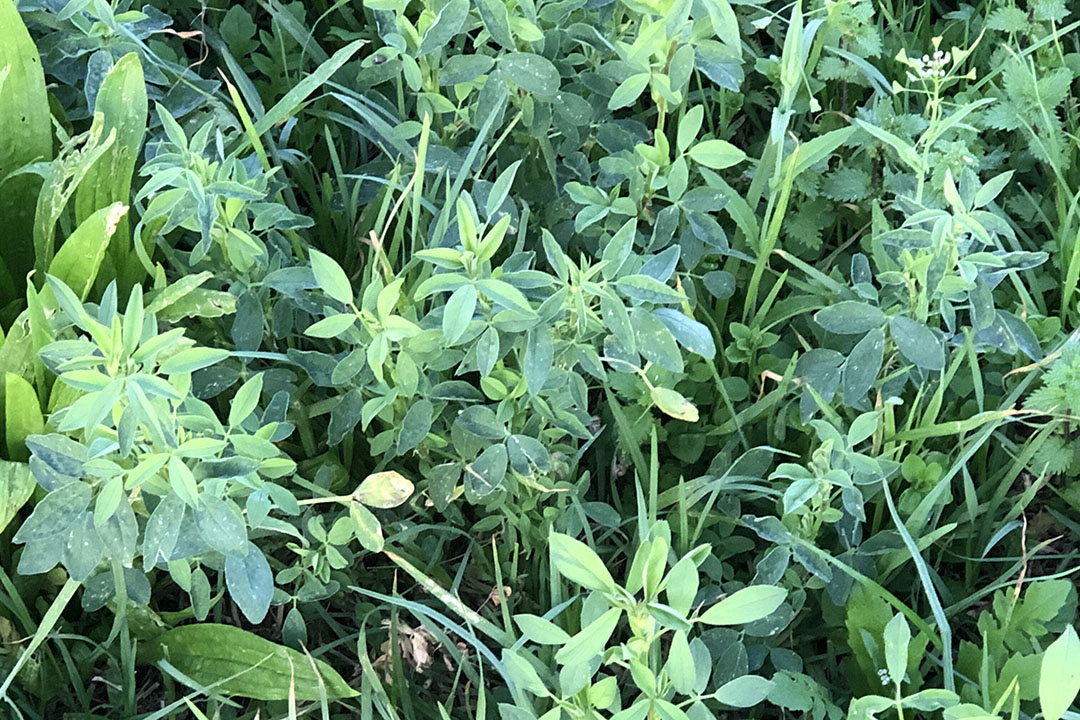
Pasture management
A disadvantage of having a pasture-based, dryland system is that the cows get more exercise than their counter-parts indoors. This requires more energy for walking, leaving less for milk production. The stocking rate, therefore, has to be carefully managed to ensure the pastures meet the cows’ needs.
Dean runs 2.4 cows per hectare. The heifers, however, walk alongside the cows, bringing the total figure up to 2.9 females per hectare. In winter, the pasture consists mostly of ryegrass, chicory and clover, with lucerne providing the bulk of the food in summer. Additional silage is provided from December to July from a 50-hectare field that Dean rents and plants maize in summer and oats in winter.
The biggest challenge with lucerne grazing is bloat management, which rears its head towards the end of summer when lucerne is the dominant pasture and rain produces a growth spurt. Bonnen explains that the herd did not have any bloat during the first 2 years of running this system, but emerged in the third year. “We are still trying to find the best way to mitigate the bloat, since the available research does not offer much insight. At this stage, we supplement the lucerne pasture with silage to dilute the lucerne component in their stomachs.”
The fields are cordoned off into camps of around 10 hectares each. The cows are left to graze a camp for 1.5 days before being moved. This allows the grass to grow back for the 30-day cycle, while also providing the cows with new pasture every other day.
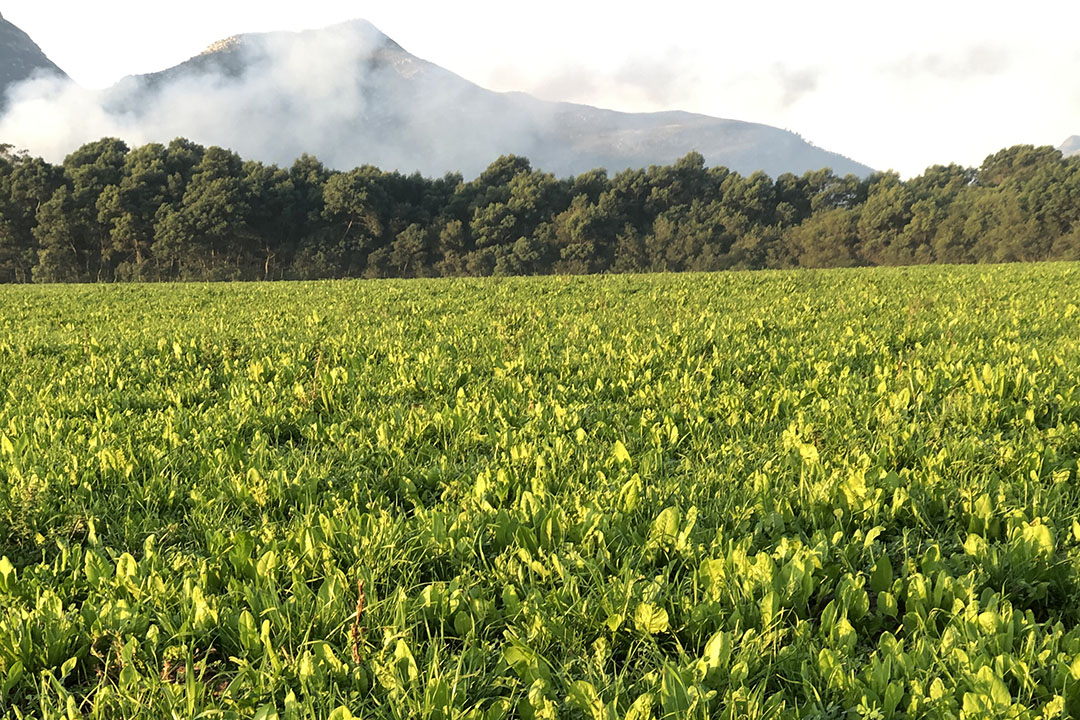
Part of the Biggs’ stewardship of the land is ensuring that the grass is never grazed to a point where it is detrimental to soil health. “If it is grazed too short then there are not enough leaves and roots to build carbon in the soil. If left too long, then we are not getting the maximum energy from our pastures. If the grass grows faster than what the cows can eat it, then we either stop fertilising the pastures or start making silage,” explains Dean.
Profitability depends on getting as much pasture grass into the cows as possible. says Dean. “This requires your presence in the land because it is only through management that you can make your pasture as effective as possible.”
The Biggs have an Afimilk system in the parlour which records each cow’s milk production, alerting the farmers to those who are under-performing. Although the system will feed these cows more concentrate, Dean aims to rectify the problem with pasture management first, only feeding more concentrate as a last resort.
The Biggs have made great strides over the last decade to rank among the top most sustainable dairy farmers in South Africa. Through meticulous management and respecting natural resources, this father-and-son team have achieved the perfect balance between input, output and long-term viability.


